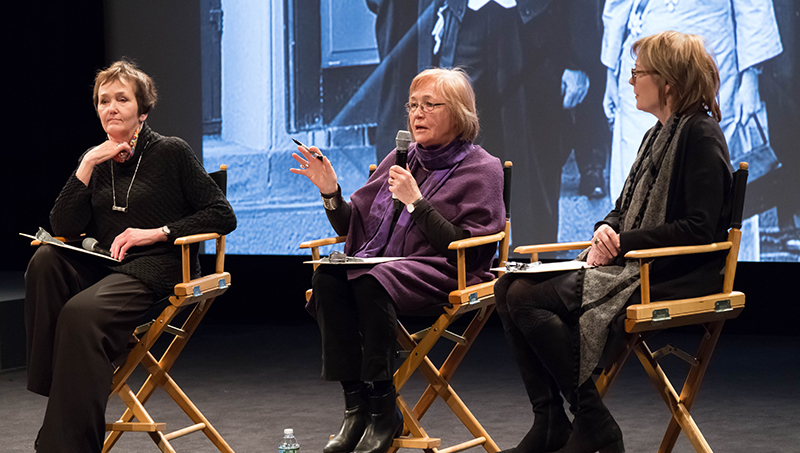
Forty-three years ago, Icelandic women used social design principles to implement "The Long Friday" strike for gender equity. As Cheryl Heller explains, the past has never felt more present.
Around ten A.M. on a Sunday morning last August, a group of mostly women sat in the small dark theater of the Moviehouse, in Millerton, New York. We had come to hear Pamela Hogan present some clips from a documentary she is making, about the 1975 women’s strike in Iceland. When my friend suggested we go, it seemed like entertaining diversion from the intensity of trying to finish my book on social design before the start of the school year.
The presentation was scheduled for the morning so that two of the strike’s organizers could join us via Skype from a living room in Reykjavik. The women were lovely and funny, recounting stories of how nonplussed the men of the country had been, even though they had known the strike was coming for months. They didn’t take it seriously until it was upon them, but as they felt the effect of the women’s effort, they named it “The Long Friday.”
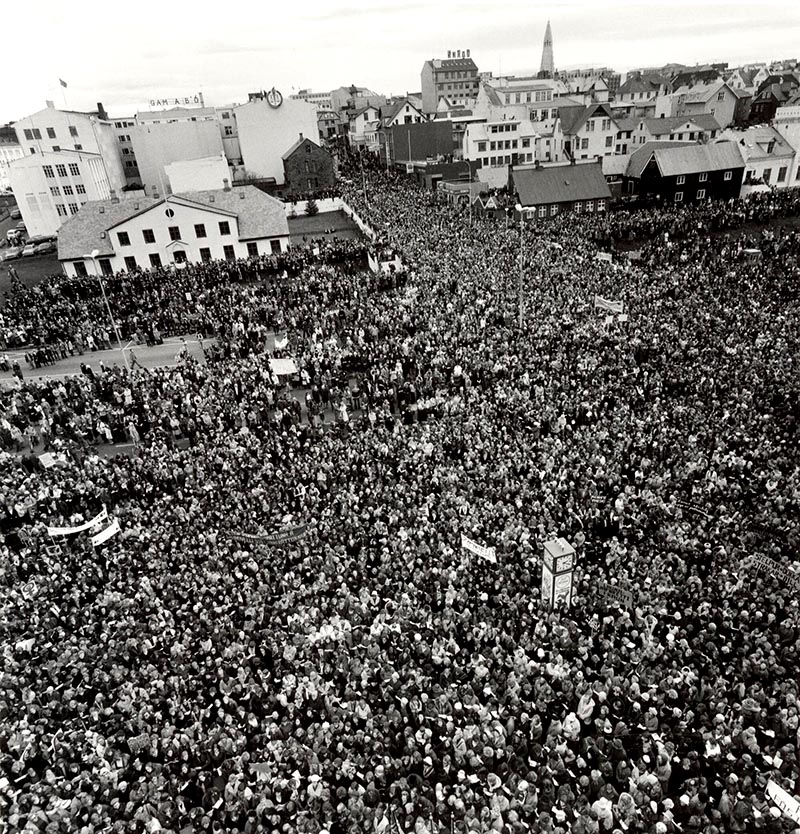
The facts are that, on a fall day forty-three years ago, ninety percent of all the women in the country of Iceland stopped working from noon until midnight. Airplanes did not take off or land, public transportation shut down, newspapers were not printed, factories closed, meals were not cooked, snotty noses weren’t wiped and diapers weren’t changed. One story is of a man who, inexperienced as a cook but desperate to feed his children, tried to fry yogurt. (He doesn’t want to talk about it.) The women aimed to make the point that their work was important. They did.
As a direct result of this event, of the conviction it forged and the force of its sisterhood, Iceland had its first female president only a few years later. The country became number one in the world in gender equality and has stayed that way. Today, it is against the law in Iceland for employers to pay women less than men for comparable jobs.
Toward the end of the presentation in Millerton, one of the women slid forward on her couch, peered into her laptop screen to get a better look at all of us in the audience, and said, “The United States ranks number forty-nine in equality for women. What are you doing about it?”
The short story of what my friend Barbara Friedman and I did was to invite Pam Hogan and these two women to the School of Visual Arts, where I am the Founding Chair of the first MFA program in Design for Social Innovation, to inspire as many powerful students and friends as we could gather. The long story is, I hope, a lot longer.
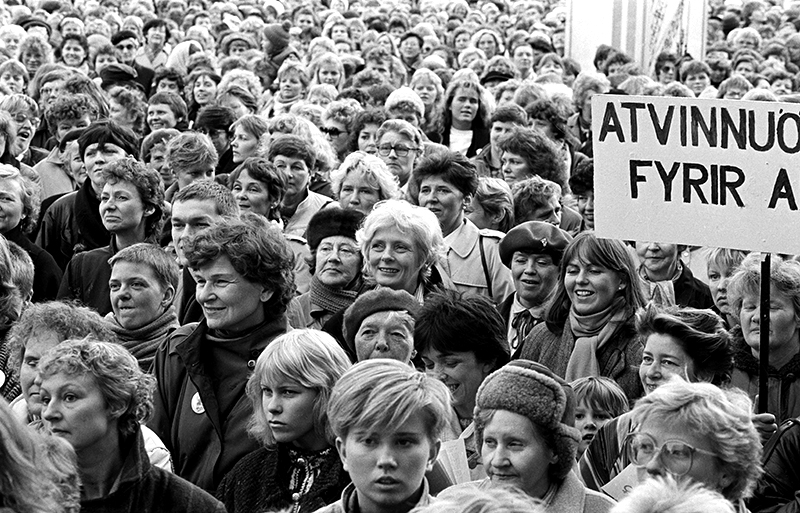
Spending time with Gudrun Hallgrimsdottir and Elisabet Gunnarsdottir, the strike organizers, was a revelation. Looking back so many years later, all that shows is the excitement and joy evident in photographs of that day. The story becomes abbreviated: they organized a strike and they won. Behind the funny anecdotes and the charm of their tellers was a calculated, relentless year and a half-long effort, and a killer design strategy. Killer, because it worked; design, because as I was able to dig deeper and unpack it, the principles and processes they employed were pure social design.
It was human centered: design with, not for. The Red Stockings, a women’s movement founded in 1970, first proposed the idea for the strike. Men criticized the group, which was considered radical, and its members were called “man-haters,” “communists,” “ugly,” “hairy,” “masculine,” and “sexless.”But instead of becoming clannish and creating the event within their own homogenous group, they spent countless hours talking to people outside their members to see what others wanted. They learned about issues and perspectives beyond their own and incorporated them along the way. For one example, many Icelandic women considered the idea of a strike too confrontational, so a decision was made to frame it as a “Day Off,” which made it palatable to far more participants than a strike would have been.
The real measure of social design is whether or not it builds capacity in the people who participate in its processes to repeat its success and to continue to create positive change for themselves.
It was inclusive. One of the critical decisions was to include women who did not work outside the home; to make the case that all women’s contributions counted, even if they weren’t being paid for it. They conceived the event around the issues common to everyone, and part of the joy of the day was seeing farmer’s wives and homemakers, executives and professional workers come together for the rights of all.
It was collective leadership. There was no chief, no CEO; rather, it was a group of committed core members who led by engaging, including, inspiring with the vision for what they wanted to realize. It wasn’t smooth sailing either. Many times fractures threatened the cohesion of the growing movement. But driven by their higher purpose, the greater goal took precedent over personal disagreements or political differences. The leadership team never lost sight of their north star—of what they believed was possible—and they used that to unite and energize the women of Iceland.
Despite the lack of a hierarchical leadership structure, they were highly organized and resourced. Participants contributed what and how they could. Teachers who had mimeograph copiers in their schools made flyers, writers wrote, seamstresses made flags. It was contribution by joyful choice rather than assignment.
They moved forward through inquiry, not as deciders. Every meeting, every idea became a prototype. What worked was carried forward, what didn’t was discarded. One hilarious move was to dress up a cow, with tiara and sash, and enter her in a beauty contest. They wanted to make the point that women were being judged like livestock. A great experiment, though clearly it was not scalable.
Social designers are inventive, entrepreneurial, creative, articulate, and strategic. But most importantly, they are leaders.
They communicated brilliantly. In the year and a half they spent meeting and talking about plans, they met with many groups of men to try to win support. Before every meeting, they collaborated, strategizing about the best way to approach these enclaves of male power. It was a conscious decision to use humor, to win through charm and laughter. And never to give up.
Without the internet or social media, they designed a carefully calculated campaign, including face-to-face, door-to-door, flyers, brochures, and postcards. They enticed radio stations to promote the day off continually, talked a newspaper into giving them the same full page every week for updates. They communicated to build relationships, to invite, and include (no “mansplaining”as we call it these days).
They delighted. They included what is so often omitted from issues of import and social justice. They never lost their sense of delight in working together, or their joy in being women. Designers have a unique ability to attract, to create desire that succeeds where fear and obligation do not. The core team behind the Long Friday held full time jobs while organizing this event, and never let it kill their sense of humor, or the good feelings they incited in all who participated.
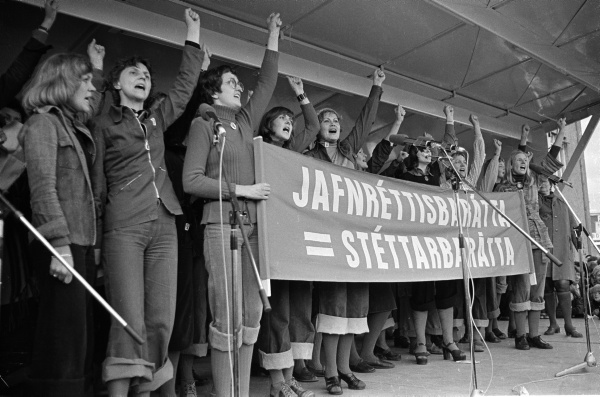
Social designers are inventive, entrepreneurial, creative, articulate, and strategic. But most importantly, they are leaders. They are the ones who step up, instead of just thinking about issues; like these women in Iceland who won equality, like Paul Polak who has helped twenty million people earn their way out of poverty, like Michael Murphy of MASS Design who has redefined the role of an architect and the built environments he or she creates. They are the ones who act; who, by learning from other people, facilitate a process that moves beyond invention to fulfill a higher purpose. It’s both harder and more self-evident than it appears. It is not making posters or giving money or retweeting or any of the other single acts we typically perform. It’s all those things, organized into a cohesive, inclusive system that takes on momentum and a life of its own.
The real measure of social design is whether or not it builds capacity in the people who participate in its processes to repeat its success and to continue to create positive change for themselves. This is where the Icelandic women’s success can really be seen. From this event came legislation that guaranteed women’s equality, that led to the first female president, and that voted the women into government who could continue to make progress. In the process of organizing the strike, a social infrastructure of powerful, committed women was formed who believed equality was their right and acted on their beliefs. The young girls in the crowd that day were changed by what they saw. Halla Tómasdóttir, for one, went on to found one of the country’s major investment companies and ran for president, coming in a close second. One generation changed the next and the legacy continues today.
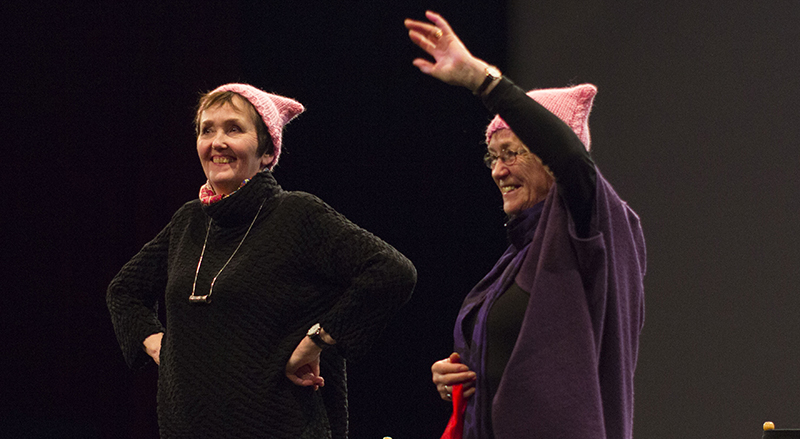
One of the most disarming moments of the almost two days I got to spend with Gudrun and Elisabet (next to seeing their faces when I gave them their gift of handmade pink pussy hats) was their answer to a personal question. I asked what had changed for each of them after that day. What it was like to wake up the next morning and realize the extraordinary outcome of all their efforts. In different ways, they both said the biggest change was that they became optimistic. It’s called agency—the belief that we have the ability to change our own lives.
It’s easy to say that Iceland is a very small country, more homogeneous than the U.S.; that what those women accomplished is so much easier to do there. That it’s so much more complicated here because there are more of us. Indeed, there are more of us: more to unify and more to do the unifying. And who better to do it than social designers?
You can see a filmed interview with Gudrun and Elisabet here. Or, watch the whole event about the film here. And to become a social designer, to learn how to create optimism and agency in yourself and others, apply here.

